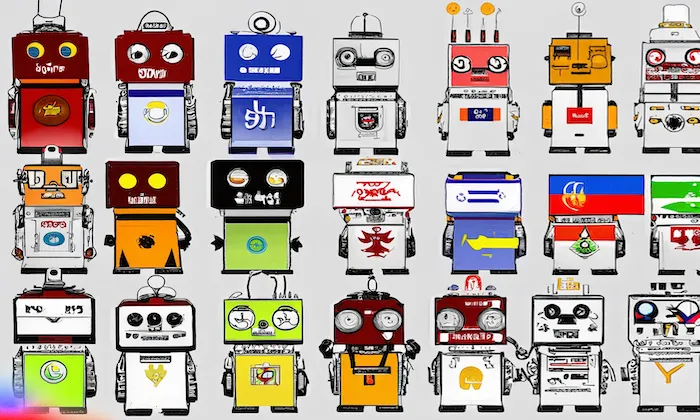What recording conditions are used in in-car speech datasets?
Speech Datasets
In-Car Audio
Speech Recognition
In-car speech datasets are crucial for advancing AI-driven voice recognition in vehicles. These collections feature voice recordings from within the car's interior, capturing spontaneous and prompted speech from both drivers and passengers. Understanding the recording conditions of these datasets is vital for developing robust AI models capable of navigating the unique acoustic environment of vehicles.
Why Recording Conditions Matter
The acoustics inside a vehicle are unlike traditional recording environments. Factors such as engine noise, road surface, and passenger conversations can impact speech clarity. Understanding these conditions is essential for:
- In-Car Speech Recognition: Models trained on realistic data perform better in practical applications.
- Noise Resilience: Diverse acoustic profiles enable models to filter background noise, enhancing accuracy.
- User Experience in Voice Systems: Accurate models improve interactions, boosting user satisfaction with voice-enabled systems.
Data Collection Methodology
In-car speech data is gathered through a structured process that ensures quality and diversity:
- Real Driving Conditions: Recordings are made in motion across urban, highway, and rural roads, capturing a range of acoustic environments.
- Stationary Recordings: Controlled settings are also used to collect data under various noise levels.
- Diverse Speaker Profiles: Multiple speakers, covering various demographics, contribute to the dataset. This inclusivity is crucial for creating models that cater to a global audience.
For specialized requirements, our speech data collection services can be tailored to specific vehicle types, noise conditions, and speaker demographics.
The Acoustic Landscape: Factors Influencing In-Car Speech Quality
Several elements shape the acoustic conditions of in-car speech datasets:
- Microphone Placement: Microphones may be dashboard-mounted or embedded in car systems, each introducing different levels of echo and distortion.
- Environmental Variables: Open windows, air conditioning, and background music can significantly affect sound quality. Recordings are made in both quiet and noisy conditions for robustness.
- Speaker Interactions: Capturing overlapping speech and spontaneous dialogues enriches the dataset.
Types of Speech Captured
In-car speech datasets include various speech types:
- Wake Words: Phrases to activate voice assistants.
- Single-shot Commands: Directives for vehicle functions.
- Multi-turn Dialogues: Simulated real interactions between drivers and AI.
- Emotional Speech: Capturing urgent or emotional commands aids in understanding user intent.
Metadata and Annotation: The Backbone of Dataset Utility
High-quality datasets feature comprehensive annotation:
- Speaker Information: Age, gender, dialect, and role (driver or passenger) are tagged for targeted model training.
- Environmental Context: Details like car type, microphone position, and noise conditions enable detailed analysis.
- Speech Annotation: Rigorous annotation captures noise labels, intent tags, and transcriptions, vital for training advanced AI models.
Real-World Applications and Use Cases
In-car speech datasets support various automotive AI applications:
- Automotive AI Applications: Enhancing voice-enabled infotainment, driver assistance, and emotion detection systems.
- Voice Command Dataset: Improving interaction with media systems and vehicle controls.
- Speech Annotation: Developing models that recognize emotional cues for safety systems.
Navigating Challenges and Best Practices
While collecting in-car speech data offers opportunities, it also presents challenges:
- Data Quality: Ensuring high-quality recordings is crucial for model performance.
- Bias Mitigation: Datasets must reflect diverse demographics and conditions to prevent bias.
- Compliance and Privacy: Adhering to privacy regulations and anonymizing data are essential practices.
Future Trends in In-Car Speech Datasets
As the field evolves, we anticipate trends such as:
- Real-time Adaptation and Learning: Models learning from real-time interactions and usage data.
- Federated Learning: Using decentralized data to personalize models while maintaining privacy.
- Multi-modal Integration: Combining speech, visual, and telemetry data for richer interactions.
Partnering for Success
To achieve high-performing AI systems, leveraging expertly curated in-car speech datasets is crucial. Visit our homepage to learn more about FutureBeeAI’s offerings, explore our customized datasets, or contact us for tailored solutions. Embrace the future of automotive AI with data solutions that enhance both performance and user experience.
What Else Do People Ask?
Related AI Articles
Browse Matching Datasets
Acquiring high-quality AI datasets has never been easier!!!
Get in touch with our AI data expert now!








